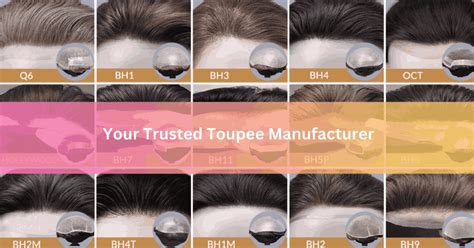Toupee systems, also known as hairpieces or hair replacement systems, have become increasingly popular for those seeking to address hair loss concerns. These systems offer a discreet and versatile solution, allowing wearers to achieve a natural-looking and undetectable hair restoration. However, the success of a toupee system hinges largely on the quality and choice of pins used to secure it in place.

Types of Toupee System Pins
Various types of toupee system pins are available, each designed to meet specific needs and preferences. The most popular options include:
-
No-Slip Clips: These clips feature a rubberized lining that provides a secure grip without damaging the hair. They are recommended for wearers with finer hair or sensitive scalps.
-
Snap Clips: Snap clips consist of two interlocking pieces that easily snap together. They offer a quick and convenient method of attachment and are suitable for most hair types.
-
Beaded Clips: Beaded clips are attached to a strand of hair using a small bead. They offer a very secure hold and are less noticeable than other types of clips.
-
Hook and Loop Attachments: Hook and loop attachments use a hook-and-loop system to secure the toupee to the scalp. They are generally not as secure as clips but are ideal for wearers with sensitive scalps.
Choosing the Right Toupee System Pins
Selecting the right toupee system pins is crucial to ensure a comfortable and secure fit. Consider the following factors:
-
Hair Type: Determine your hair type to select clips suitable for your hair’s thickness and texture. Fine hair may require no-slip clips, while thicker hair can sustain heavier clips like snap or beaded clips.
-
Scalp Sensitivity: If you have a sensitive scalp, opt for gentler options like no-slip clips or hook and loop attachments to minimize discomfort.
-
Activity Level: The level of your physical activity should influence your choice of pins. For active individuals, sturdy and secure clips like snap or beaded clips are recommended.
Proper Use of Toupee System Pins
-
Prepare Your Scalp: Wash and dry your scalp thoroughly to remove any oils or products that may affect the adhesive’s ability to hold the toupee in place.
-
Apply Adhesive: Carefully apply a thin layer of adhesive to the base of the toupee, following the manufacturer’s instructions.
-
Secure the Toupee: Align the toupee with your scalp and gently press it into place. Secure the toupee using the chosen pins, ensuring they are pushed through both the toupee base and the scalp.
-
Adjust the Fit: Once the toupee is secured, gently adjust the fit by tightening or loosening the pins as needed. The toupee should feel comfortable and secure without causing any discomfort.
-
Check Regularly: Periodically check the pins throughout the day to ensure they remain secure. Retighten any loose pins as necessary to maintain a snug fit.
Benefits of Using Toupee System Pins
Toupee system pins provide several advantages:
-
Secure Hold: Pins offer a strong and reliable hold, preventing the toupee from slipping or dislodging.
-
Customization: The variety of pins available allows for customization based on individual needs and preferences.
-
Durability: High-quality pins are durable and can withstand repeated use without breaking or losing their grip.
Tips for Long-Lasting Wear
-
Avoid using excessive adhesive, as this can weaken the pins and lead to premature detachment.
-
Clean the pins regularly to remove any buildup of hair or adhesive that may compromise their grip.
-
Store the toupee properly when not in use to protect the pins from damage.
Conclusion
Toupee system pins are essential components for achieving a secure and natural-looking hair restoration. By understanding the different types of pins available, choosing the right ones, and using them properly, you can maximize the effectiveness and longevity of your toupee system. Embrace the convenience and confidence that toupee system pins offer, and enjoy a hassle-free and stylish hair replacement solution.
Appendix
Table 1: Types of Toupee System Pins
| Type | Description | Advantages | Disadvantages |
|---|---|---|---|
| No-Slip Clips | Feature a rubberized lining | Gentle on hair, secure grip | Not suitable for thick hair |
| Snap Clips | Interlocking two-piece design | Quick and convenient, secure hold | Can be bulky |
| Beaded Clips | Attached using a small bead | Very secure, less noticeable | Requires hair strand to be thread through bead |
| Hook and Loop Attachments | Hook-and-loop system | Less secure, gentle on scalp | Not suitable for active individuals |
Table 2: Choosing Toupee System Pins for Hair Type
| Hair Type | Recommended Pins |
|---|---|
| Fine Hair | No-Slip Clips |
| Medium Hair | Snap Clips or Beaded Clips |
| Thick Hair | Snap Clips or Beaded Clips |
Table 3: Strategies for Long-Lasting Toupee Wear
| Strategy | Description |
|---|---|
| Proper Adhesive Application | Apply a thin layer of adhesive evenly to the toupee base. |
| Secure Pin Placement | Push pins through both the toupee base and the scalp. |
| Regular Pin Checks | Periodically check pins for security and retighten as needed. |
| Proper Storage | Store the toupee in a cool, dry place away from direct sunlight. |
Table 4: Common Issues with Toupee Pins and Solutions
| Issue | Solution |
|---|---|
| Pin Looseness | Clean pins and reapply them securely. |
| Pin Breakage | Replace broken pins with high-quality replacements. |
| Skin Irritation | Use pins with a soft, rubberized lining or opt for hook and loop attachments. |
| Allergic Reaction | Contact a dermatologist to determine the allergen and seek appropriate treatment. |
